Ever wondered what makes a golf club tick? If you’ve been bitten by the golf bug, you know that choosing the right golf club is crucial to your game. But do you know what golf clubs are made of? Let’s dive into the fascinating world of golf club materials and discover why they matter so much.
The Basics of Golf Club Composition
Before we get into the nitty-gritty, let’s break down the basics. A golf club consists of three main parts: the club head, the shaft, and the grip. Each part plays a pivotal role in your performance on the course, and the materials used in each component can make a significant difference.
Club Heads: The Powerhouses

When it comes to smashing those long drives, the club head is your best friend. But not all club heads are created equal. Here are some of the materials used to make them:
Materials Used in Club Heads
- Titanium: Known for its strength and lightweight properties, titanium is a favorite in modern drivers. It allows for a larger club head size without the extra weight, giving you more forgiveness and power.
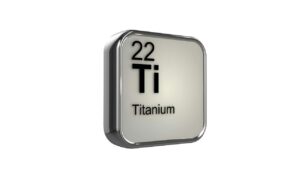
- Stainless Steel: This is the go-to material for many irons and some fairway woods. It’s durable, affordable, and offers a good balance of strength and flexibility.
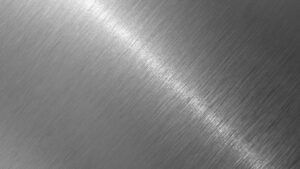
- Aluminum: While less common, aluminum is used in some club heads for its lightweight nature. However, it’s not as strong as titanium or steel.

- Carbon Fiber: Emerging as a high-tech option, carbon fiber is incredibly light and strong, allowing for innovative designs that can enhance performance.
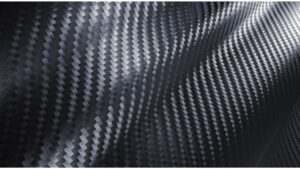
Advantages and Disadvantages of Each Material
- Titanium: Pros include lightweight and durability; cons are higher cost.
- Stainless Steel: Pros are affordability and strength; cons include heavier weight.
- Aluminum: Pros are lightness and affordability; cons are lower strength and durability.
- Carbon Fiber: Pros are ultra-lightweight and customizable; cons are high cost and less widespread use.
Technological Innovations in Club Heads
From adjustable weights to aerodynamic designs, technology has revolutionized club heads. These innovations are often tailored to the material used, optimizing the club’s performance.
Read also: How Much to Rent Golf Clubs?
Shafts: The Backbone of the Club
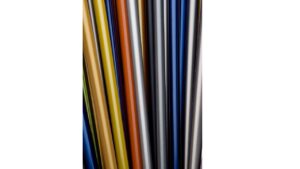
The shaft is crucial for transferring energy from your swing to the ball. Let’s explore the materials used here:
Materials Used in Shafts
- Steel: Known for its durability and consistency, steel shafts offer great control and are favored by many skilled players.

- Graphite: Lighter than steel, graphite shafts are excellent for increasing swing speed and distance, making them popular among beginners and those with slower swing speeds.

Comparing Steel vs. Graphite Shafts
- Steel Shafts: Provide better control and feel but are heavier.
- Graphite Shafts: Offer more distance and are lighter but can be less consistent.
Customizing Shafts for Performance
Customizing your shaft material and flex can significantly impact your game. Working with a professional fitter can help you choose the best option for your swing style.
Grips: The Touchpoint

The grip is where you connect with your club, so it’s essential to get it right.
Materials Used in Grips
- Rubber: The most common material, offering a good balance of comfort and durability.
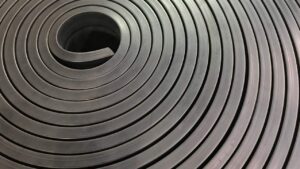
- Synthetic Materials: These can provide enhanced grip and durability, especially in wet conditions.
- Leather: Offers a premium feel and excellent grip but can be less durable and more expensive.
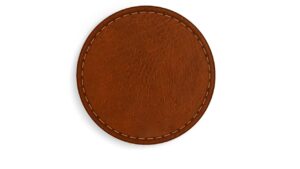
Choosing the Right Grip Material
Your choice of grip material can affect your comfort and control. Try different materials to see which feels best in your hands.
Read also: How Much Does a Golf Club Weigh?
The Evolution of Golf Club Materials
Golf, a sport with centuries of history, has seen significant advancements in equipment, particularly in the materials used to make golf clubs. Understanding the evolution of these materials provides insight into how technology and innovation have shaped the modern game.
Historical Perspective
Golf clubs have come a long way since their inception. Early clubs were rudimentary, made from materials that were readily available and easy to work with.
- Wooden Clubs: In the early days of golf, clubs were primarily made from wood. The shafts were typically made from hickory, known for their strength and flexibility, while the heads were crafted from hardwoods like beech or apple. These clubs, though beautiful and unique, were heavy and lacked durability.
- Iron Clubs: As golf became more popular in the 19th century, the need for more durable and precise clubs led to the introduction of iron-headed clubs. These were initially forged by blacksmiths and offered greater accuracy and control compared to their wooden counterparts.
- Steel Shafts: The introduction of steel shafts in the 1920s marked a significant leap forward. Steel was more durable and provided consistent performance, allowing for better control and power. This innovation quickly became the standard for most golf clubs.
Modern Trends and Innovations
In the 20th century, advancements in materials science and manufacturing techniques revolutionized golf club design. Today, clubs are made from a variety of high-tech materials, each chosen for its specific performance characteristics.
- Titanium: Emerging in the 1990s, titanium quickly became a favorite for driver heads due to its high strength-to-weight ratio. This material allowed for larger club heads with larger sweet spots, providing more forgiveness and distance.
- Graphite Shafts: Graphite shafts were introduced in the 1970s but gained popularity in the 1990s. Lighter than steel, graphite allows for increased swing speeds, translating into greater distance. This makes them particularly popular for drivers and fairway woods.
- Carbon Fiber: The use of carbon fiber in golf clubs represents the cutting edge of modern golf technology. Carbon fiber is incredibly lightweight and strong, allowing for innovative club designs that maximize performance. It’s often used in combination with other materials to enhance specific characteristics like weight distribution and flexibility.
- Composite Materials: Modern clubs often use composite materials, blending different substances to create clubs that offer the best of both worlds. For example, combining titanium and carbon fiber can result in a club that is both lightweight and durable, with optimal performance characteristics.
Read also: How many golf clubs in a set?
Impact of Materials on Playability
Different materials can dramatically affect how a club performs. Let’s break down some key aspects:
How Different Materials Affect Distance
Lighter materials like titanium and graphite can help increase swing speed, translating to greater distance. Conversely, heavier materials like steel can offer more control but might reduce swing speed.
How Materials Influence Control and Accuracy
Steel shafts and heavier club heads tend to offer better control and accuracy, making them a favorite for precision shots. Lighter materials can be more challenging to control but offer more distance potential.
Environmental and Economic Considerations
As we become more environmentally conscious, the sustainability of golf club materials is becoming increasingly important.
Sustainability in Golf Club Manufacturing
Materials like carbon fiber and titanium, while high-performing, have a larger environmental footprint. Manufacturers are exploring more sustainable practices and materials to address this issue.
Cost Implications of Different Materials
High-tech materials like titanium and carbon fiber are more expensive, reflecting their performance benefits. However, there are plenty of affordable options like stainless steel and graphite that offer excellent performance without breaking the bank.
Customizing Your Golf Clubs

Customizing your golf clubs can significantly impact your game, tailoring each club to your unique swing style, physical attributes, and personal preferences. Here’s a deep dive into why customization matters and how to get started.
1. Why Customization Matters
Every golfer is unique. Customizing your clubs ensures they are perfectly suited to your swing speed, strength, and playing style. Off-the-shelf clubs are designed for the “average” golfer, but few players fit this mold. Custom clubs can lead to improved performance, greater consistency, and a more enjoyable golfing experience.
2. Analyzing Your Swing
Before you can customize your clubs, you need to understand your swing. This involves analyzing your swing speed, tempo, and mechanics. Professional club fitters use advanced tools like launch monitors to gather data on your swing, providing valuable insights that guide the customization process.
3. Choosing the Right Shaft Material
The shaft is a crucial component of the club, and its material can significantly influence your performance. Steel and graphite are the two primary materials used in shafts. Steel shafts offer better control and are preferred by players with faster swing speeds. Graphite shafts are lighter, helping to increase swing speed and distance, making them ideal for players with slower swings or those looking to reduce strain.
4. Selecting the Proper Shaft Flex
Shaft flex refers to how much the shaft bends during your swing. It’s essential to match the flex to your swing speed:
- Extra Stiff (X): For very fast swing speeds (105+ mph)
- Stiff (S): For fast swing speeds (95-105 mph)
- Regular (R): For moderate swing speeds (85-95 mph)
- Senior (A): For slower swing speeds (75-85 mph)
- Ladies (L): For the slowest swing speeds (below 75 mph)
Using the correct shaft flex helps ensure consistent ball striking and accuracy.
5. Customizing Club Length
The length of your clubs affects your stance, posture, and swing mechanics. Clubs that are too long or too short can lead to poor contact and inconsistent shots. Club length should be adjusted based on your height, arm length, and swing style. A professional fitting will determine the optimal length for each club in your set.
6. Adjusting Lie Angle
The lie angle is the angle between the club’s shaft and the ground when the club is at its address. An incorrect lie angle can cause the ball to veer off course. Adjusting the lie angle ensures that the clubface strikes the ball squarely, promoting straight, accurate shots. This adjustment is particularly important for irons.
7. Optimizing Loft Angle
The loft angle of the clubface affects the trajectory and distance of your shots. Customizing the loft can help you achieve the desired ball flight. For example, adjusting the loft of your driver can help you optimize launch conditions for maximum distance. Similarly, fine-tuning the lofts of your irons can ensure consistent gapping between clubs.
8. Customizing Grips
The grip is your direct contact with the club, so it’s vital to get it right. Grip size should match the size of your hands; too small or too large a grip can affect your swing mechanics. Additionally, different materials and textures can provide varying levels of comfort and traction. Trying different grip options can help you find the one that feels best and provides the most control.
9. Balancing Weight and Swing Weight
The overall weight of the club and its swing weight (the balance point) can influence your swing. Some golfers prefer lighter clubs for increased swing speed, while others prefer heavier clubs for more control and stability. Swing weight adjustments can fine-tune how the club feels during your swing, helping you achieve better consistency.
10. Personalizing Club Aesthetics
While performance is paramount, aesthetics also play a role in customizing your clubs. Many golfers enjoy personalizing their clubs with specific colors, designs, or engravings. Custom aesthetics can boost your confidence and make your clubs feel truly your own.
Conclusion
Understanding what golf clubs are made of can give you a significant edge on the course. From the club head to the grip, each material has its own set of characteristics that can enhance or hinder your performance. By choosing the right materials for your game, you can improve your distance, control, and overall enjoyment of golf.
FAQs:
1. What is the most durable material for golf clubs?
Stainless steel is highly durable and offers excellent longevity, making it a popular choice for many clubs.
2. Are titanium club heads worth the investment?
Yes, titanium club heads are worth the investment if you’re looking for a lightweight option that provides greater forgiveness and distance.
3. How often should I replace my golf club grips?
You should replace your golf club grips at least once a year or after 40 rounds of play to maintain optimal performance.
4. Can I mix different materials in my golf set?
Absolutely! Many golfers mix different materials to optimize their performance, such as using graphite shafts for drivers and steel shafts for irons.
5. What materials are best for beginners?
Beginners often benefit from graphite shafts and titanium club heads, as these materials can help increase swing speed and distance while providing forgiveness.



